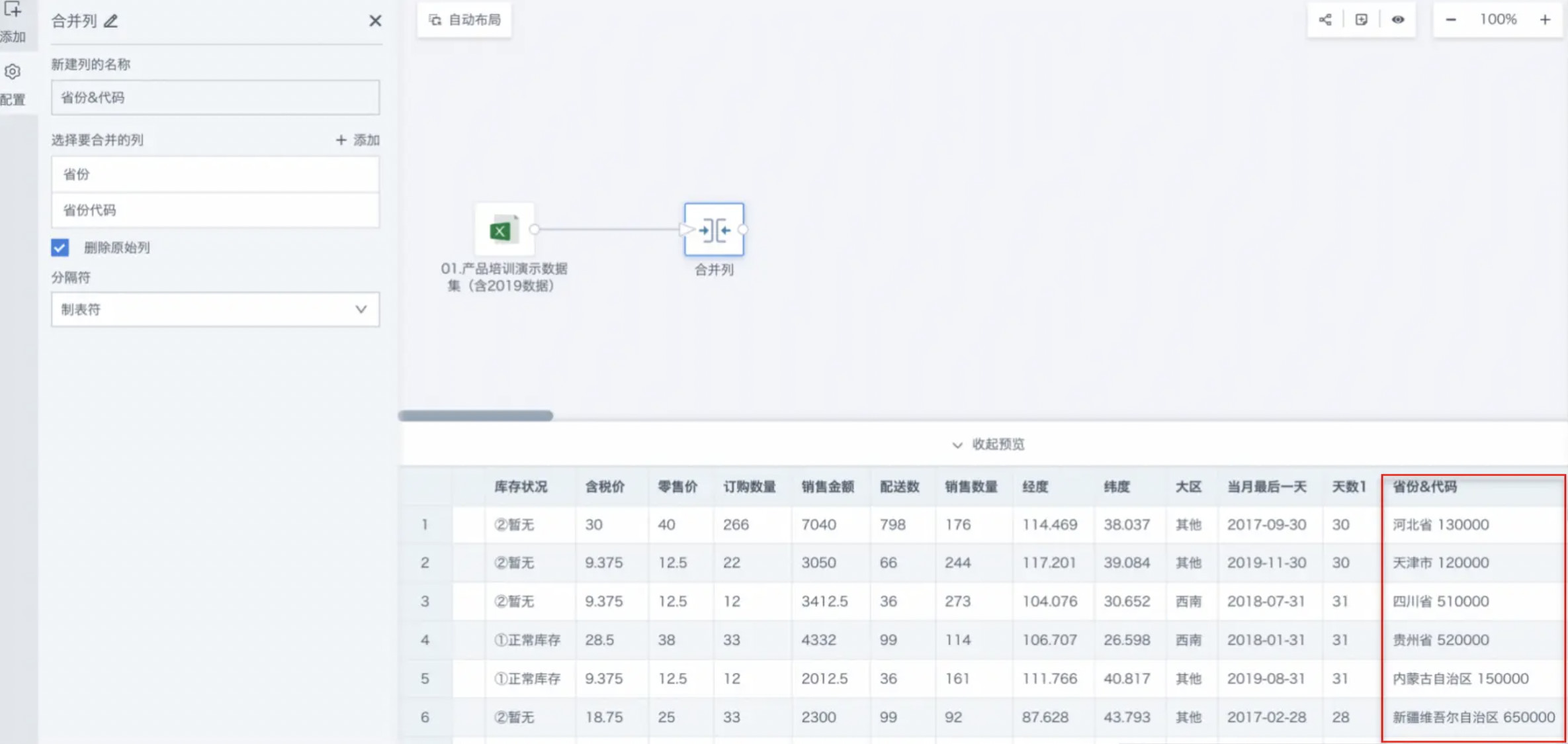Merge Columns
1. Function Description
Merge columns refers to combining data from two or more existing columns in a dataset into a new column. This operation is used to integrate data, allowing information from different columns to be presented in the same column.
For example, merging region names (such as province, city, street) in a product order table into a complete address, or integrating date information (year, month, day) into a complete date. This operation not only makes data cleaner but can also generate new information, improving the dimension and depth of data.

2. Operation Steps
-
Drag the Merge Columns operator from the data flow operator area into the right canvas editing area;
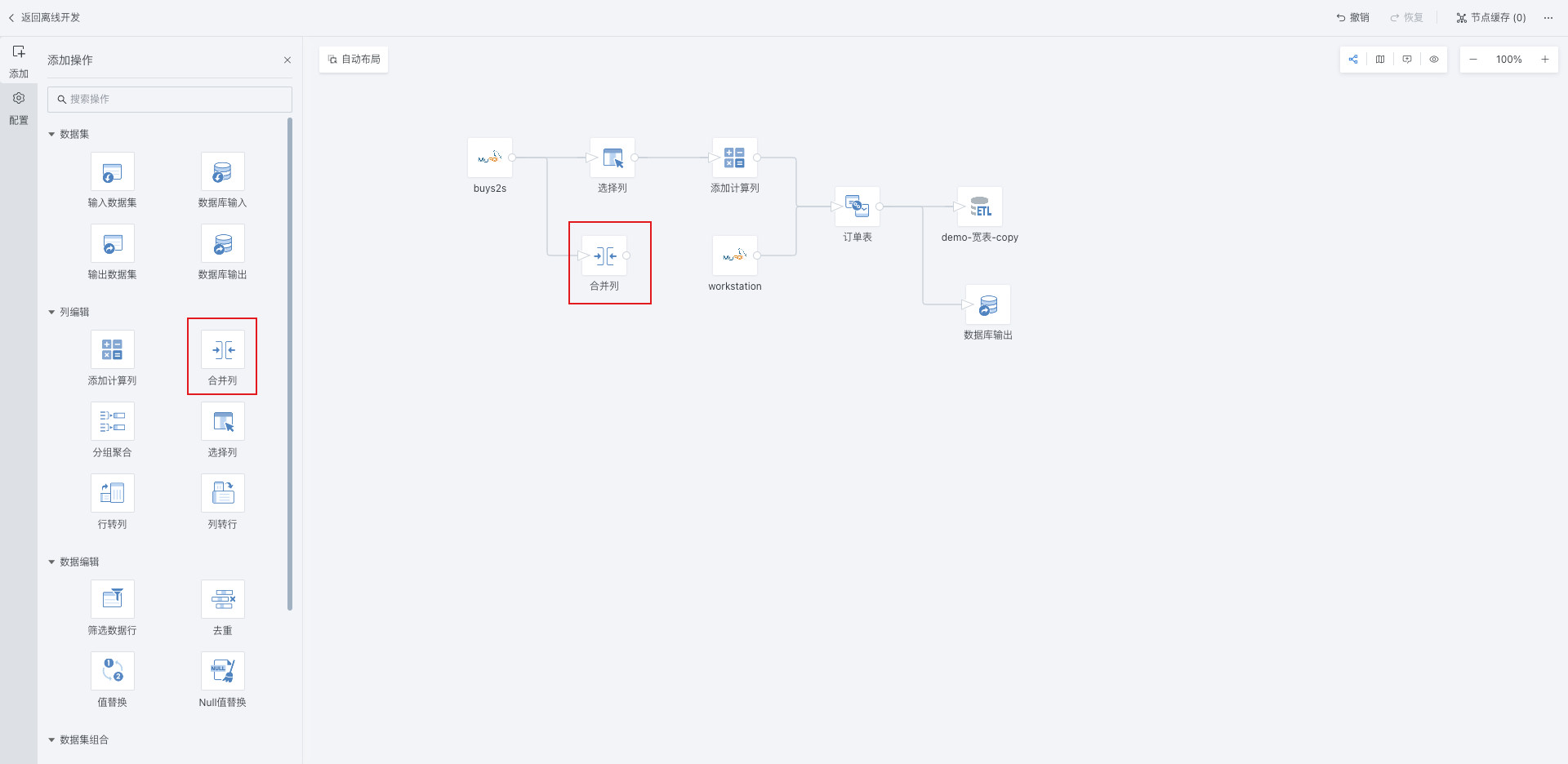
-
Click the Merge Columns operator, specify the new column name, check the original columns to be merged as needed, and click OK;
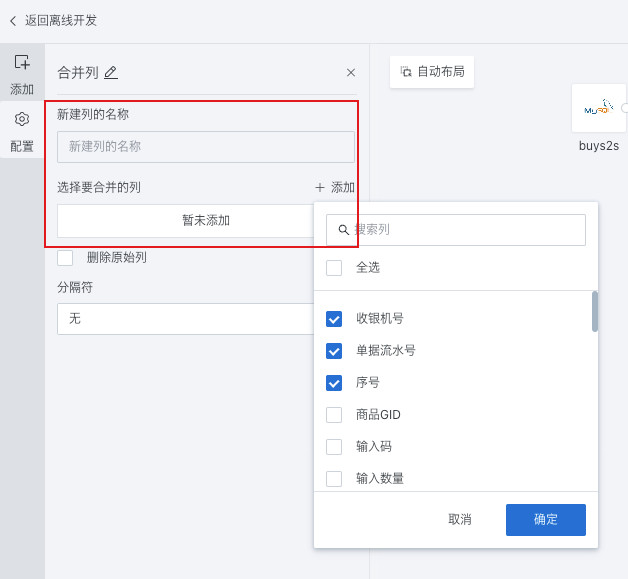
-
Choose whether to Delete Original Columns as needed;

-
Set a separator for the new column to define how the original columns are merged;

-
After configuration is complete, preview the data results.
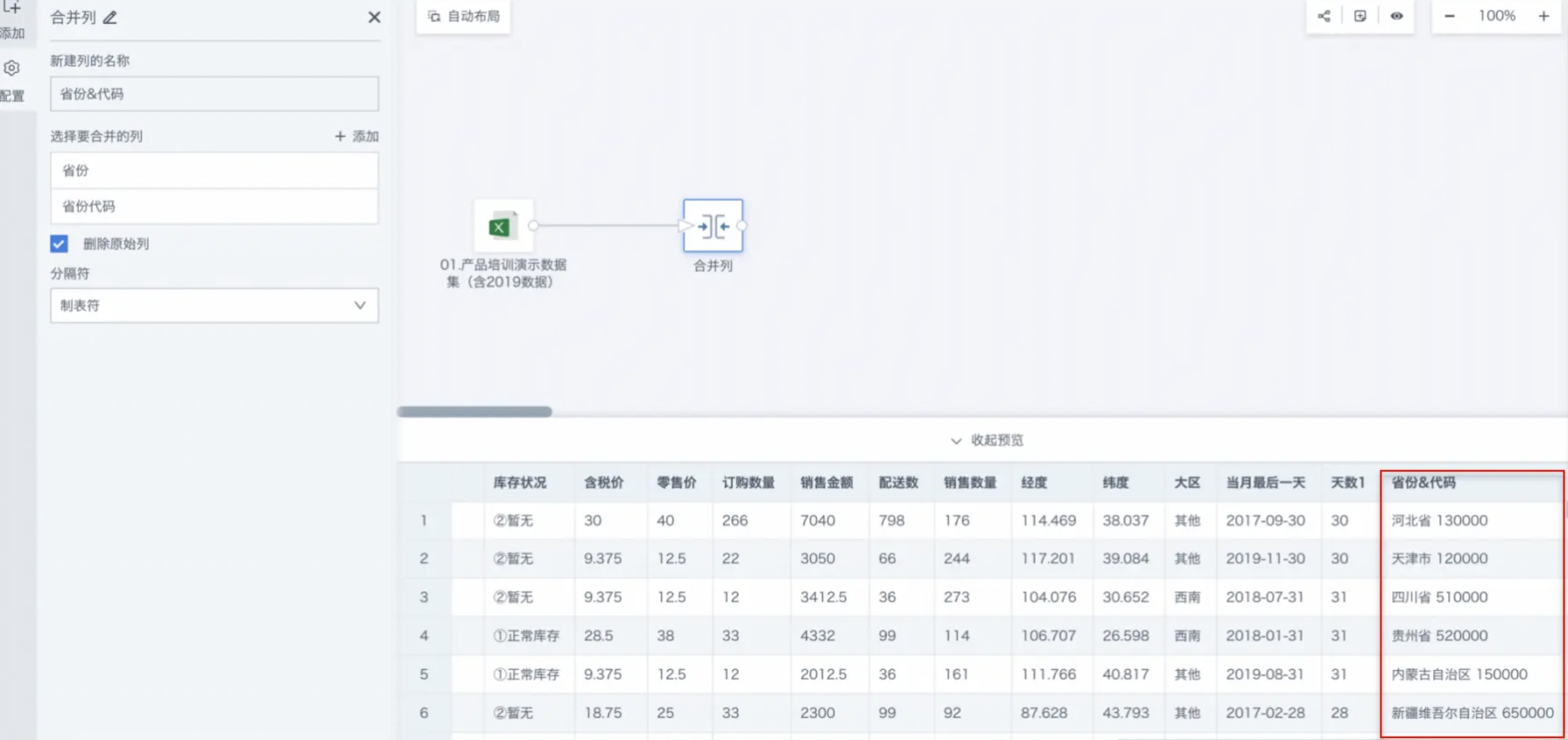
3. Specific Case
The following introduces configuring a Province & Code as an example.
-
Drag the "Merge Columns" operator from the ETL operator area into the right canvas editing area and connect it after the upstream node;
-
Click the "Merge Columns" operator. The left area becomes the current operator configuration area. Rename it according to business needs, such as "Province & Code";
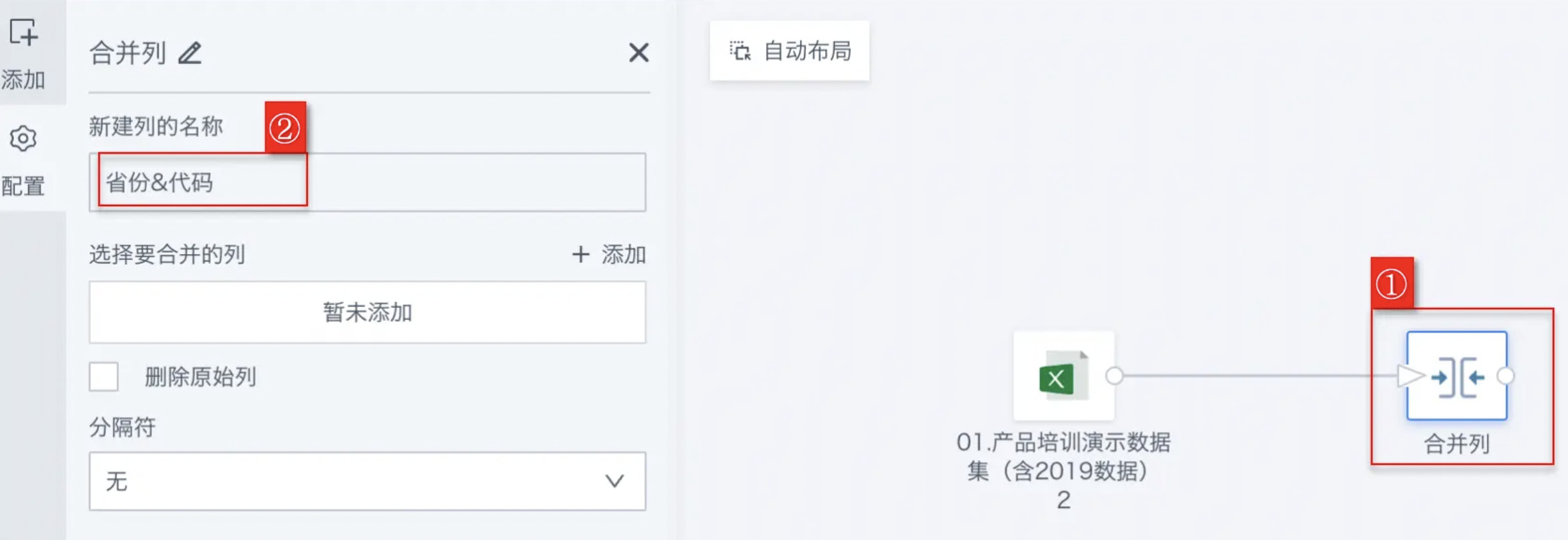
-
Click the "Merge Columns" operator to enter its configuration interface. In the configuration interface, set the columns to be merged and configure the merge method as needed;
NoteSeparators can choose from none, semicolon, comma, tab, space, custom, etc.
- Merge columns: Province, Province Code
- Set a separator for the new column to define how the original columns are merged. Here the separator is "Tab".
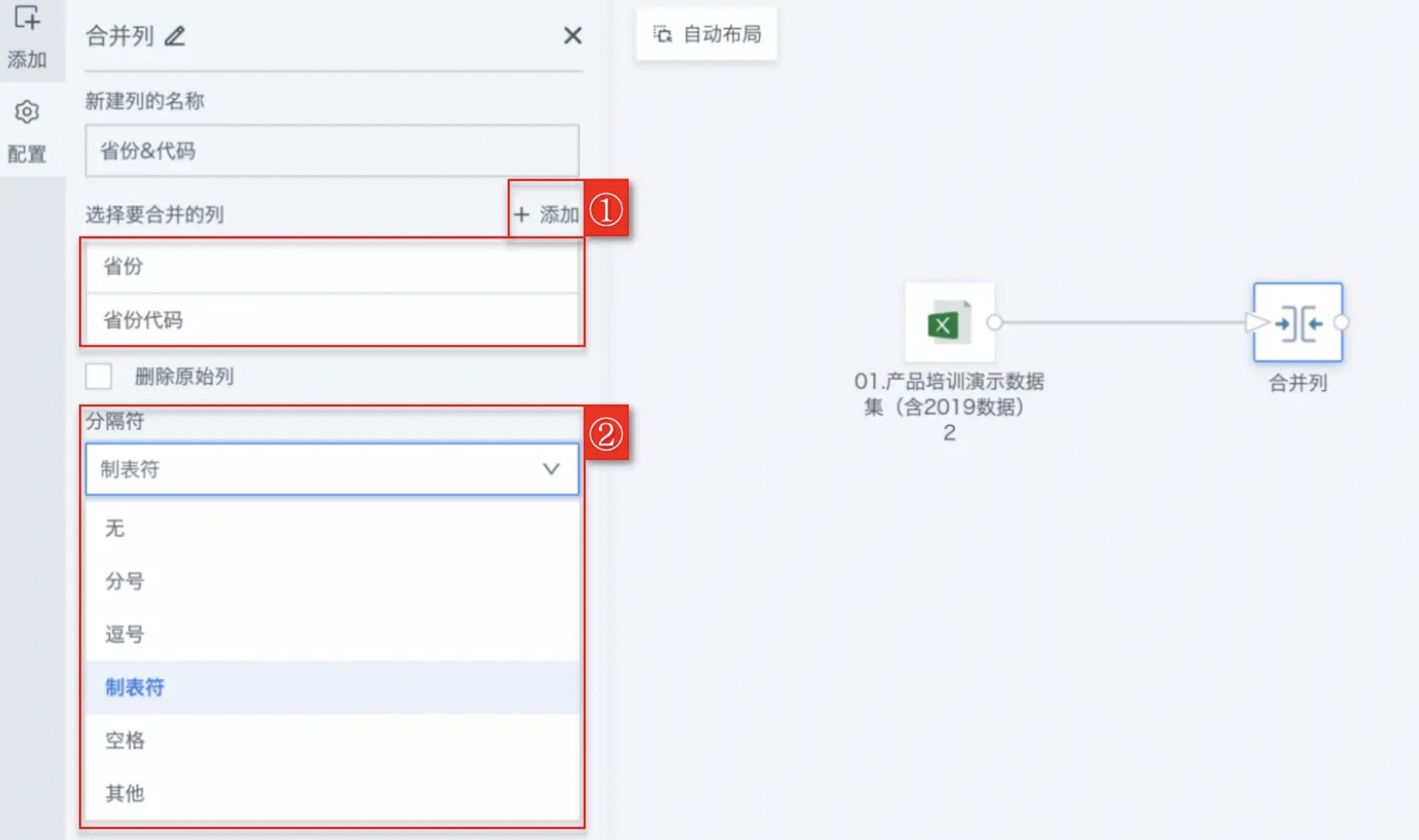
-
Choose whether to Delete Original Columns as needed. The original columns after merging can be deleted or retained;
-
Delete original columns:
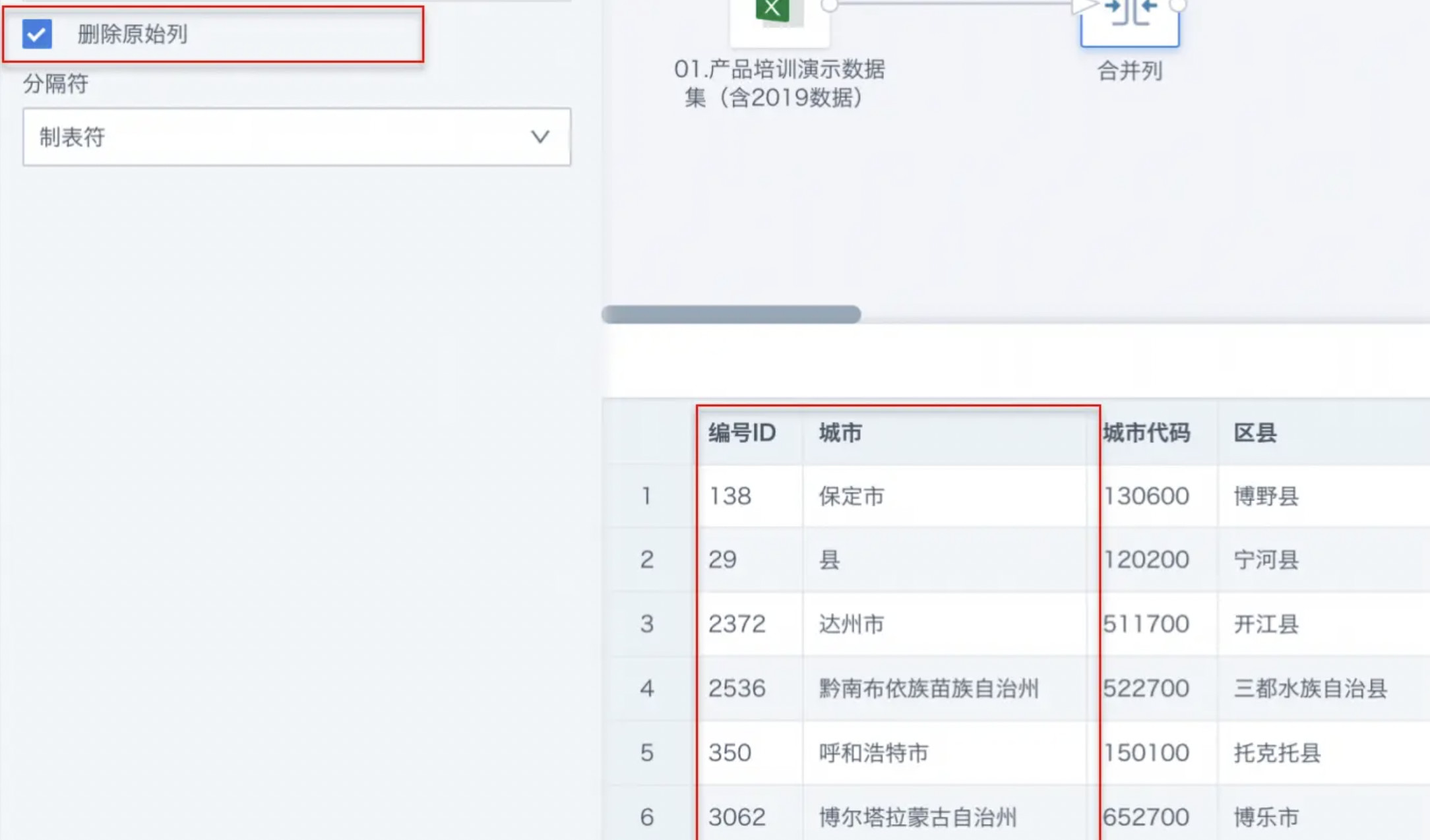
- Retain original columns:
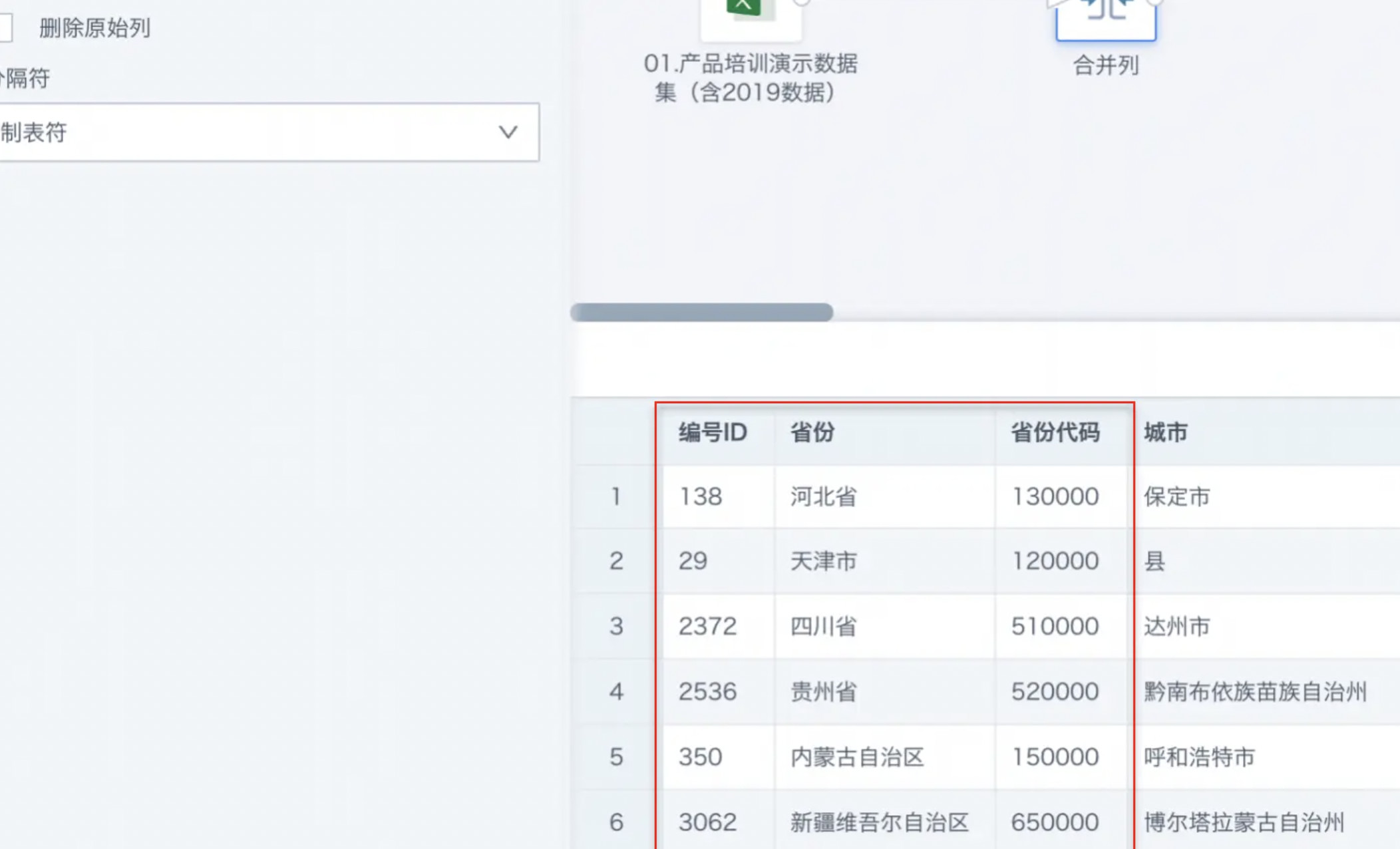
-
-
Click Preview to preview the data results to ensure that the merged column values meet expectations and do not contain errors or abnormal values.
